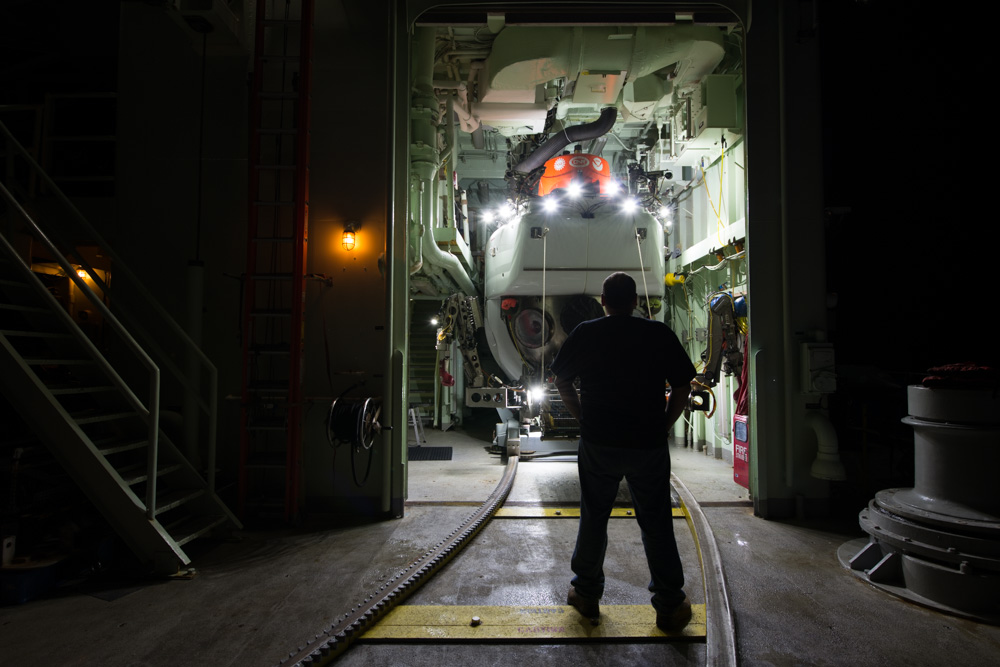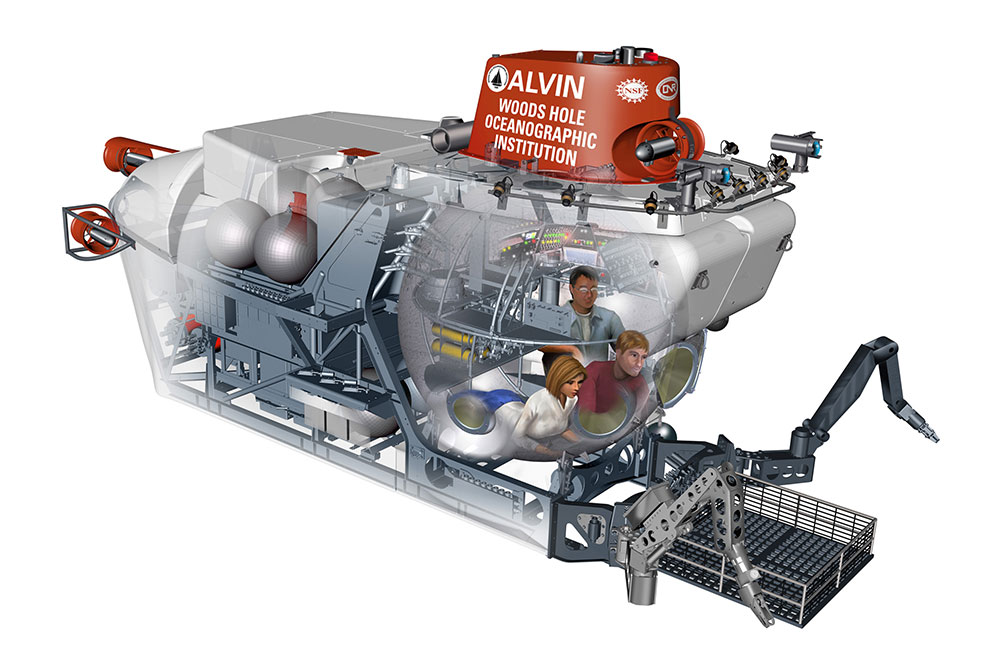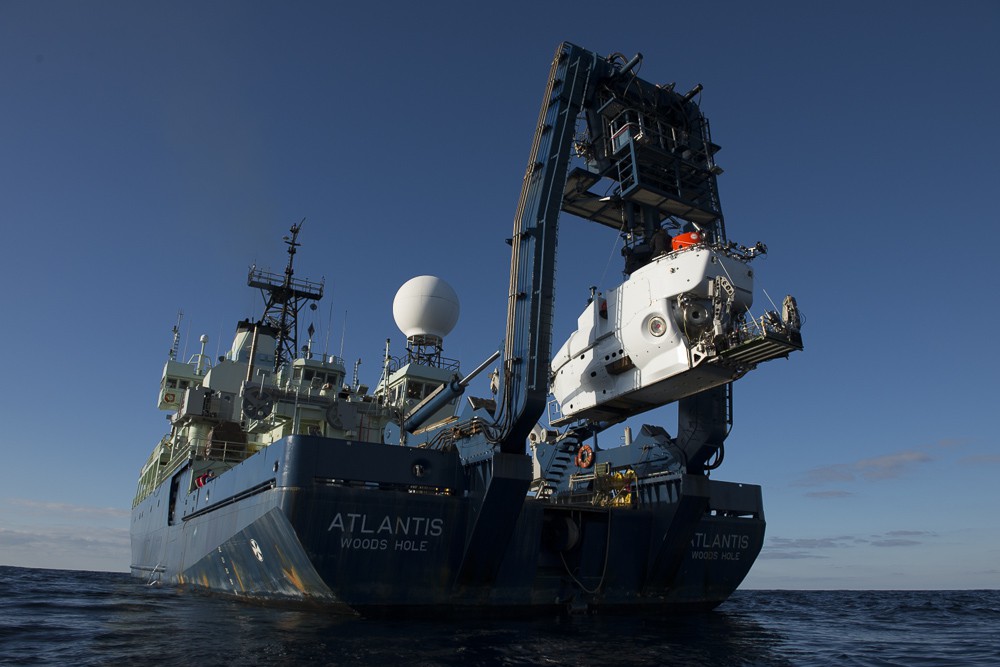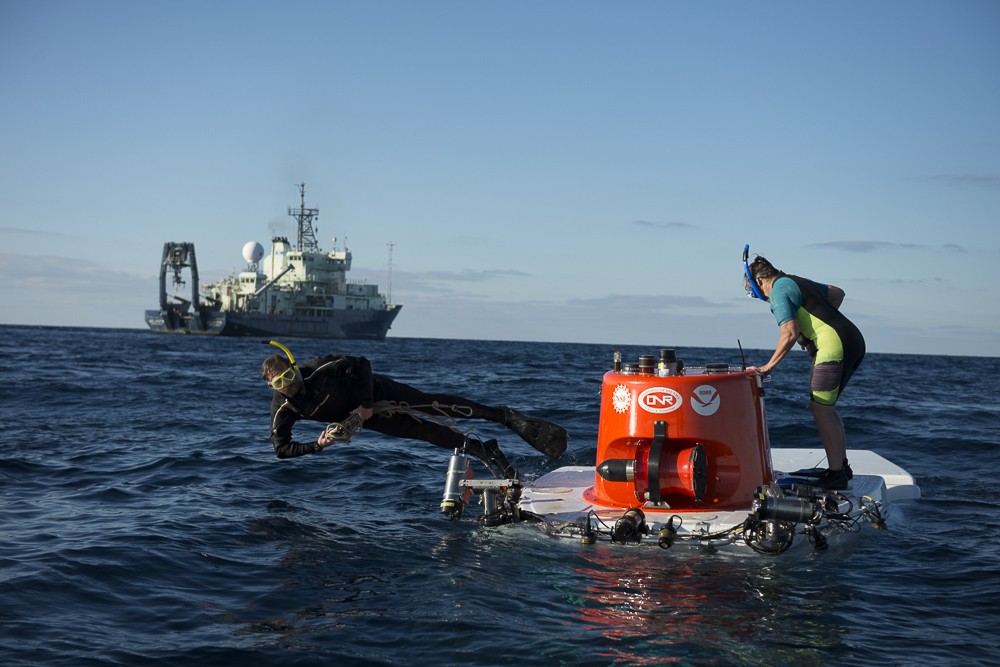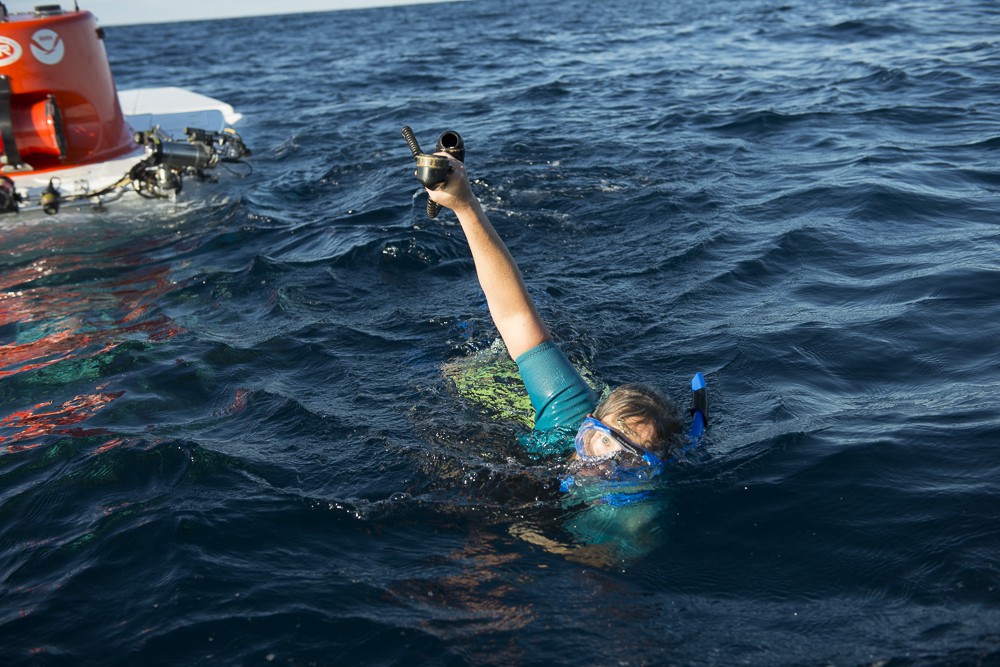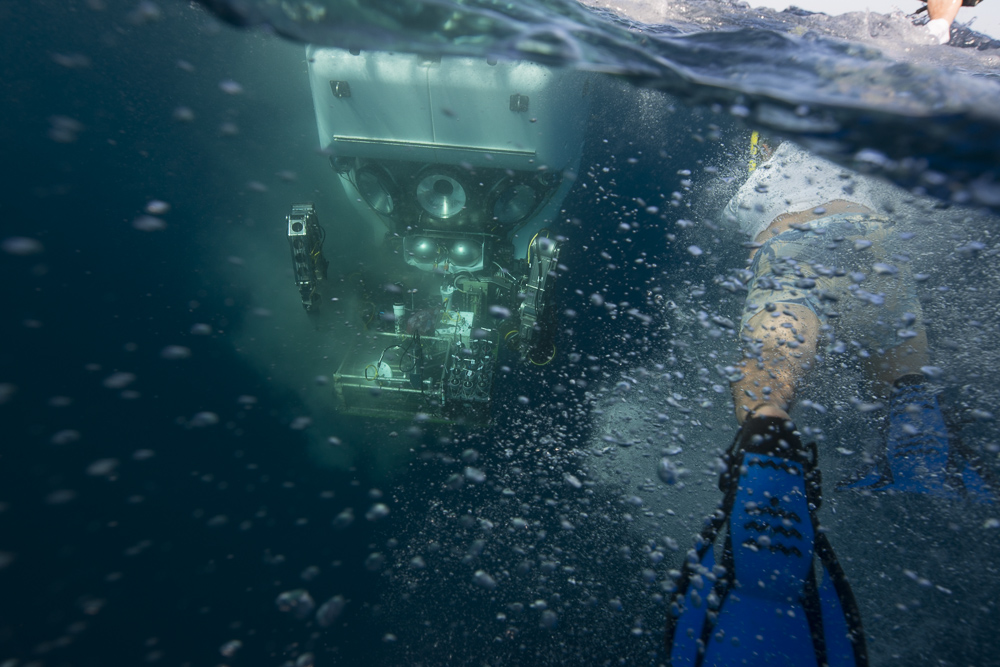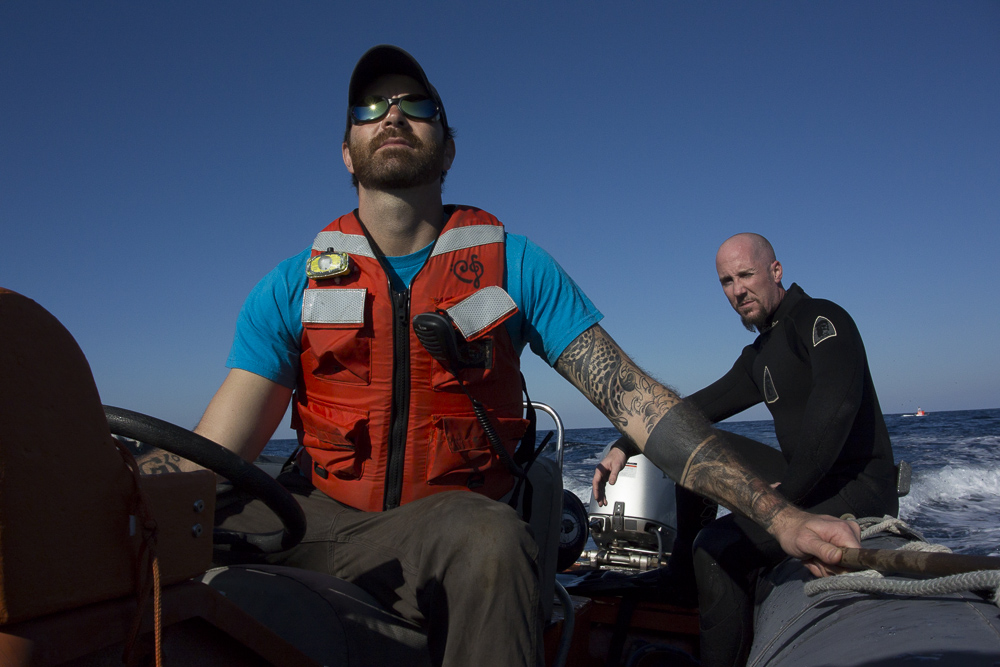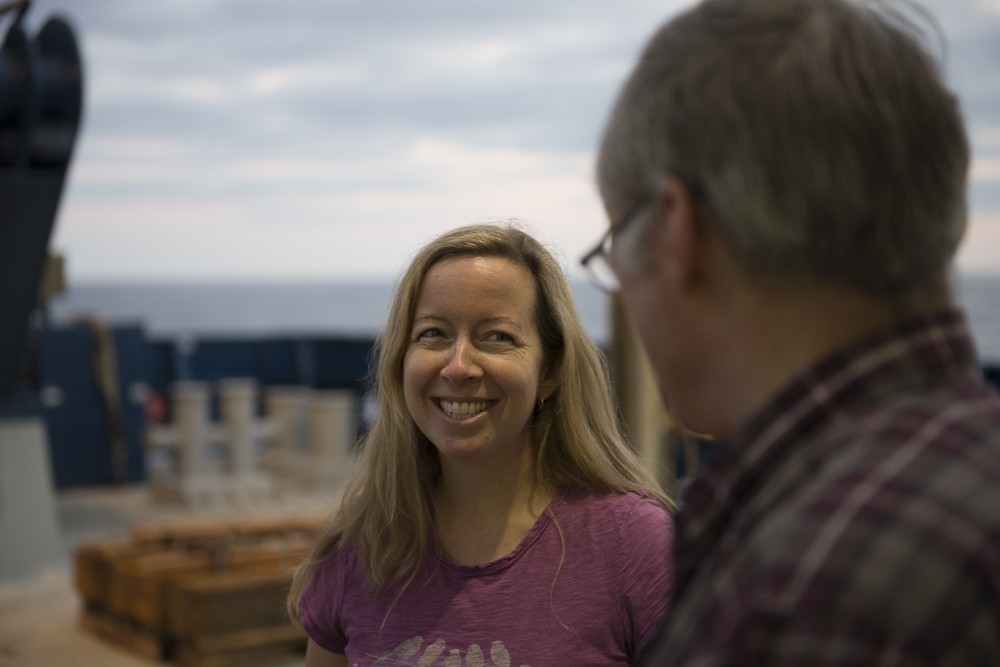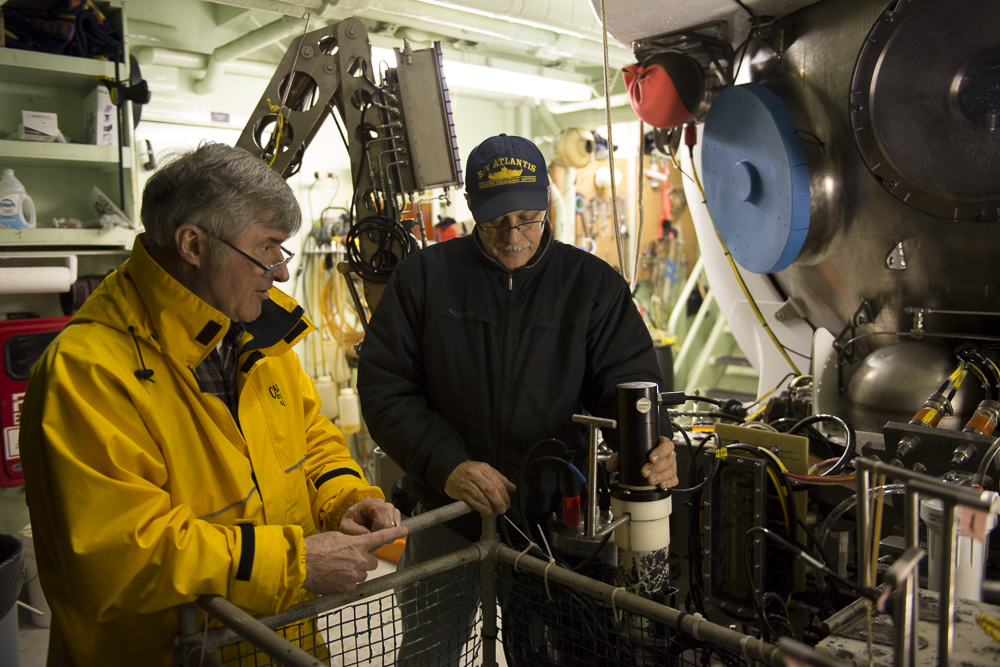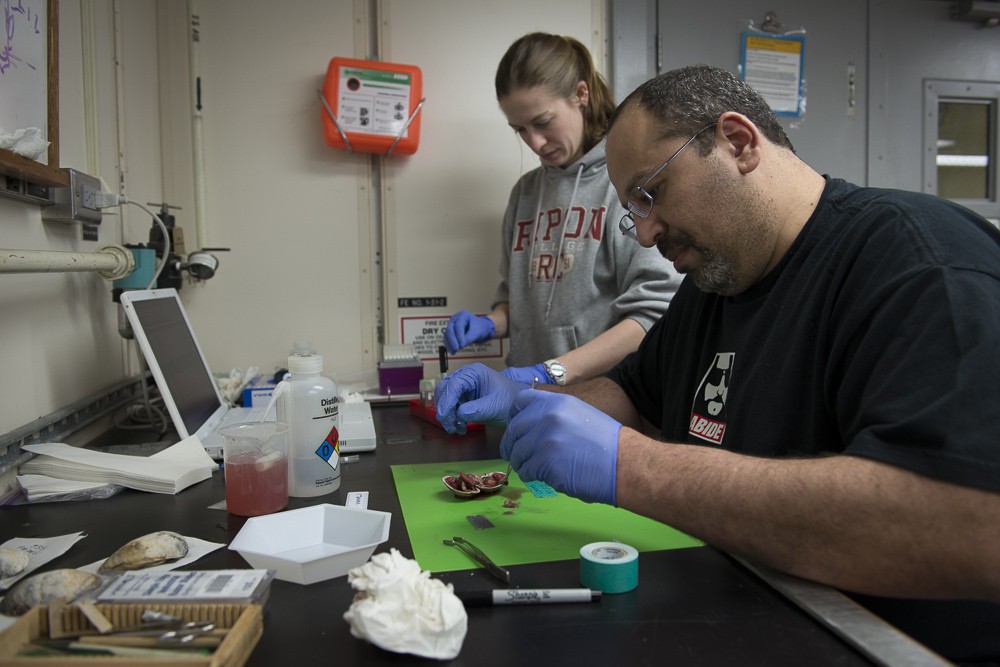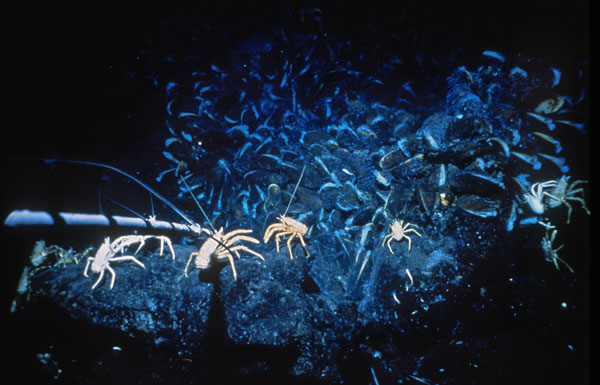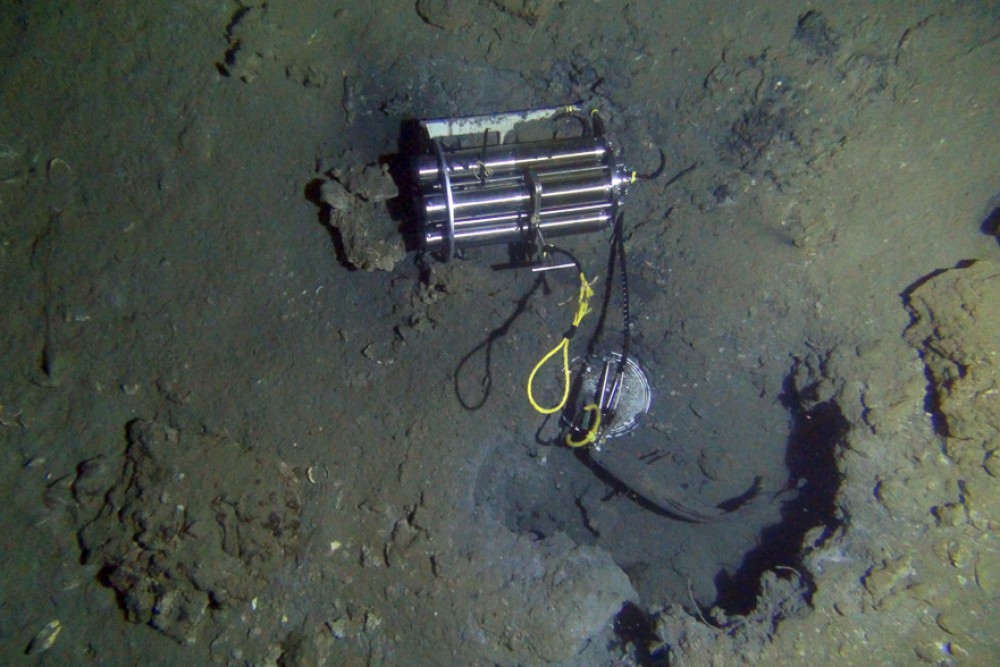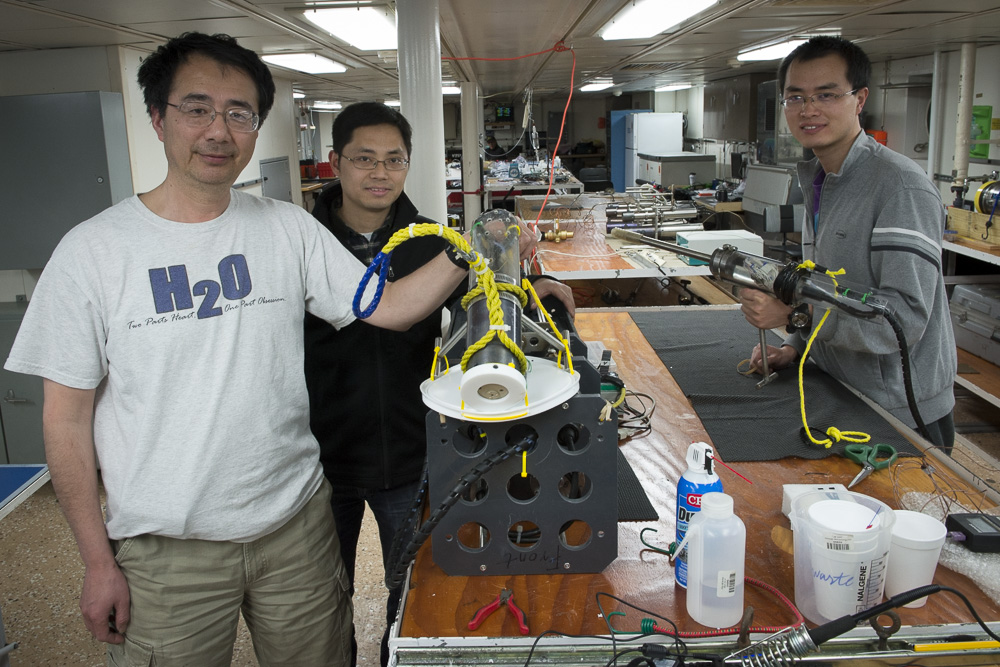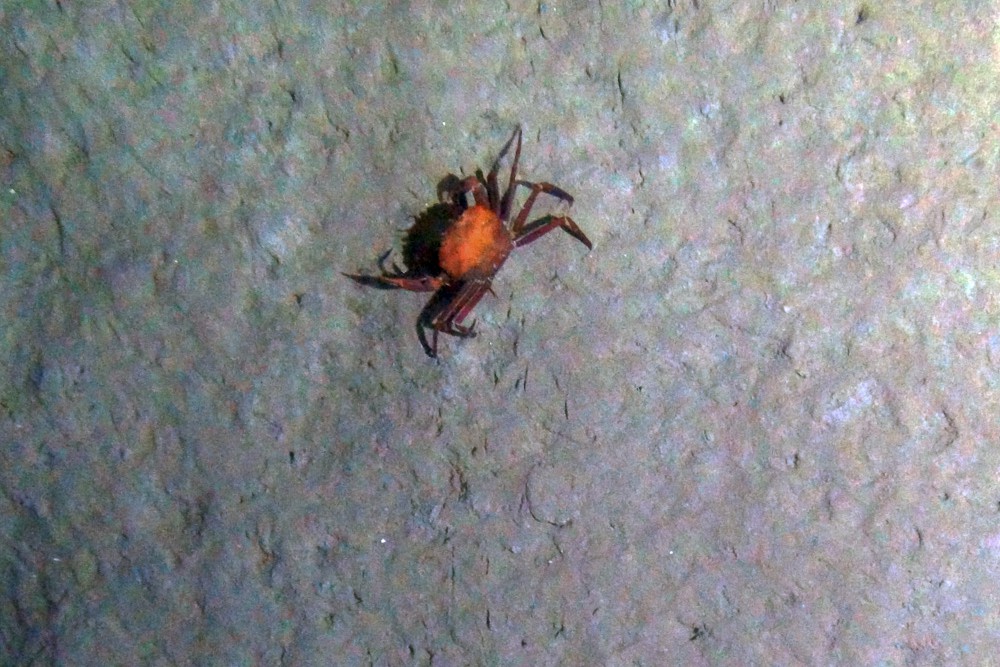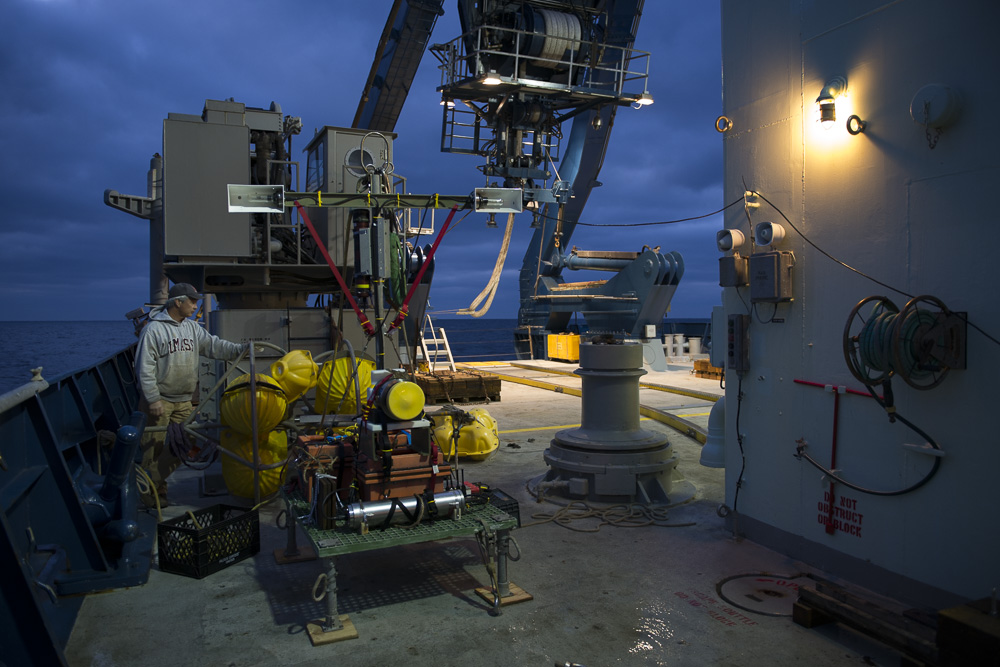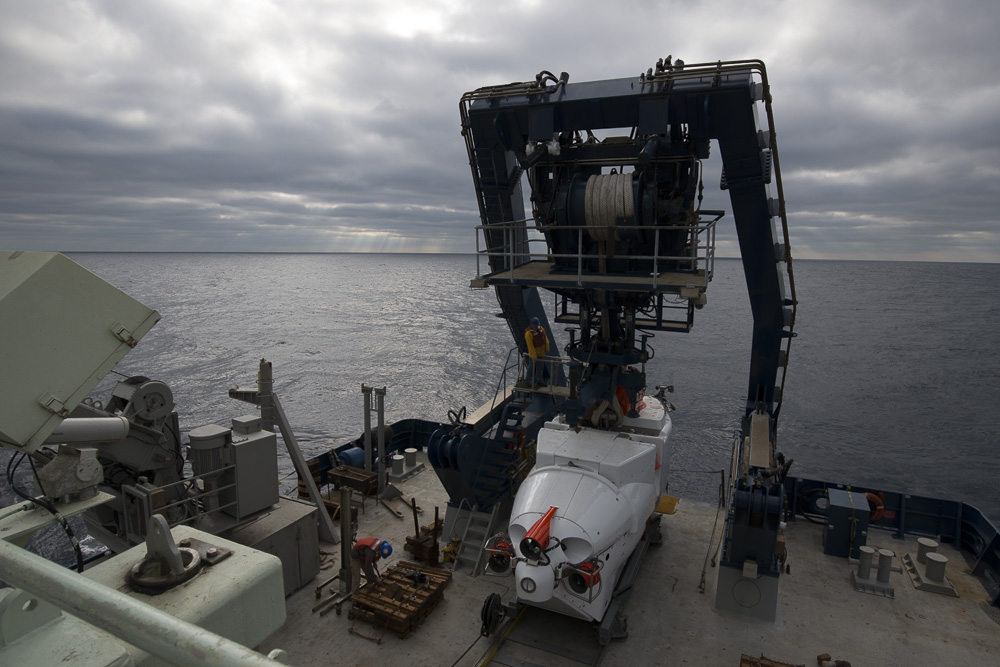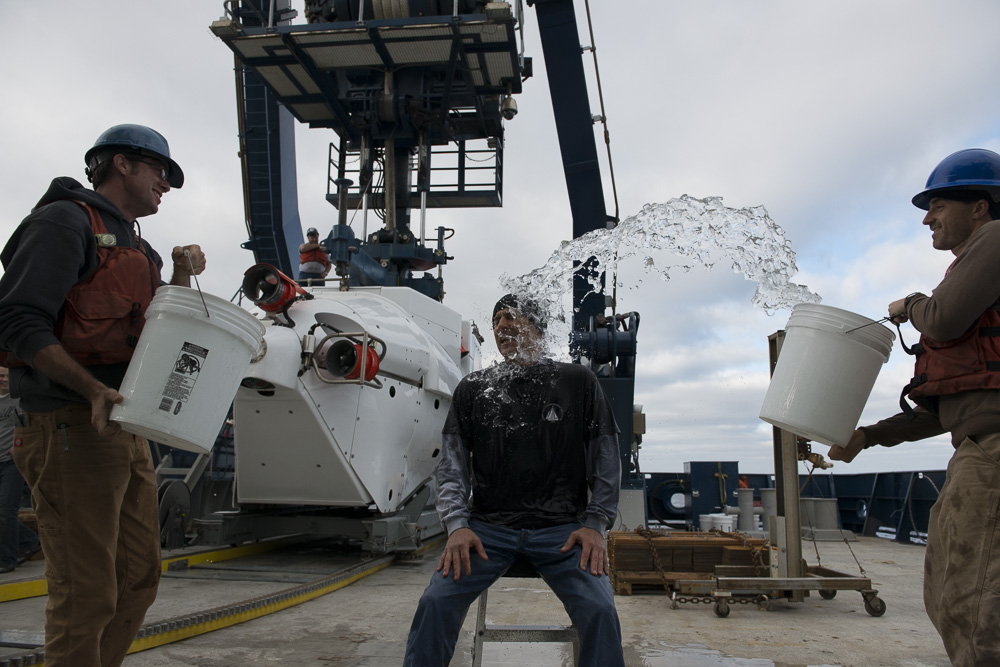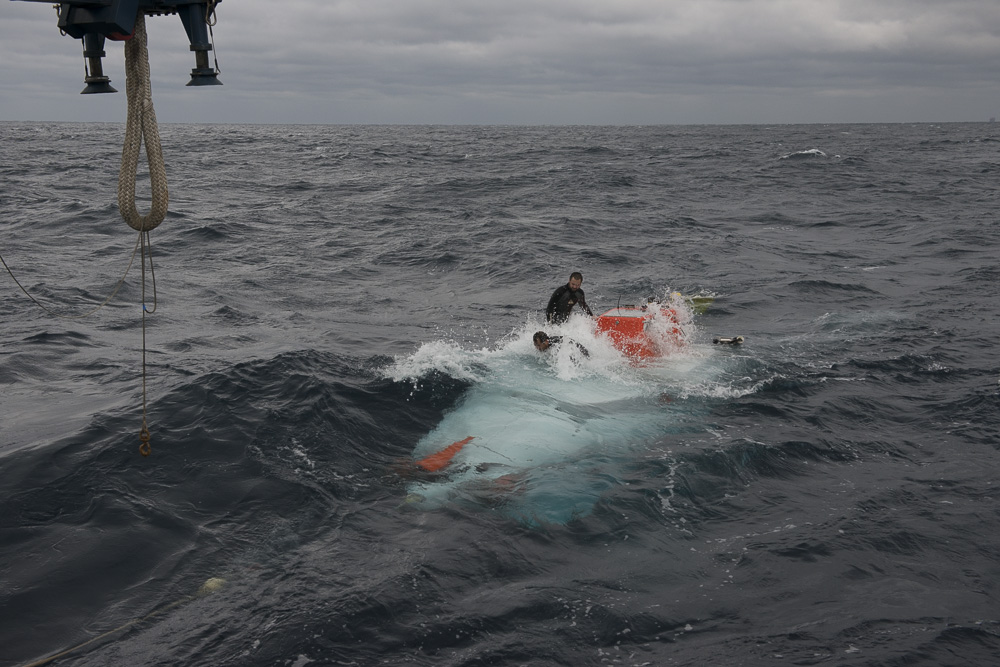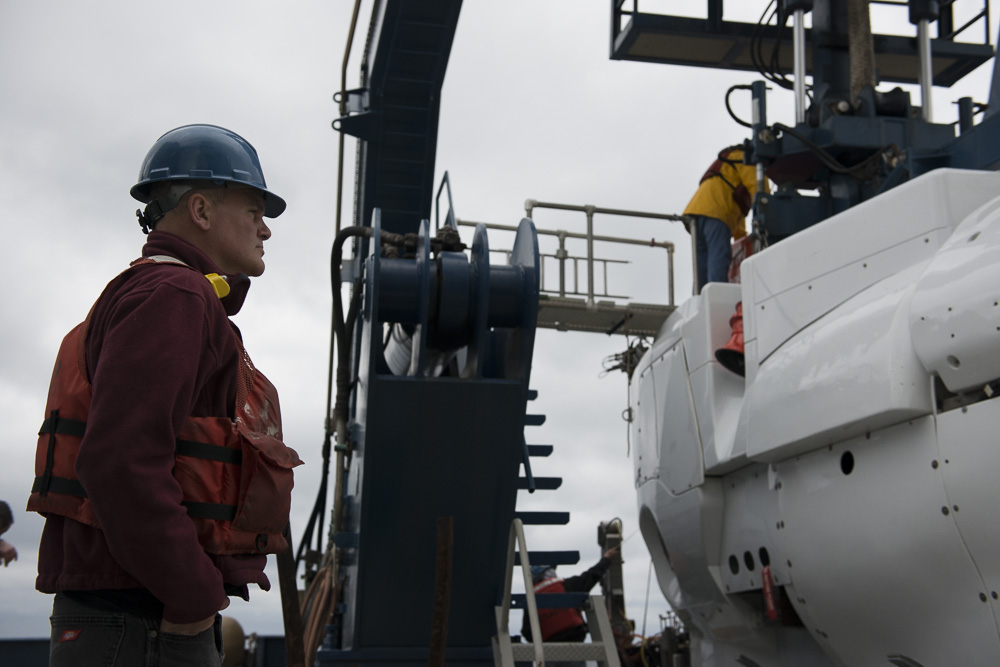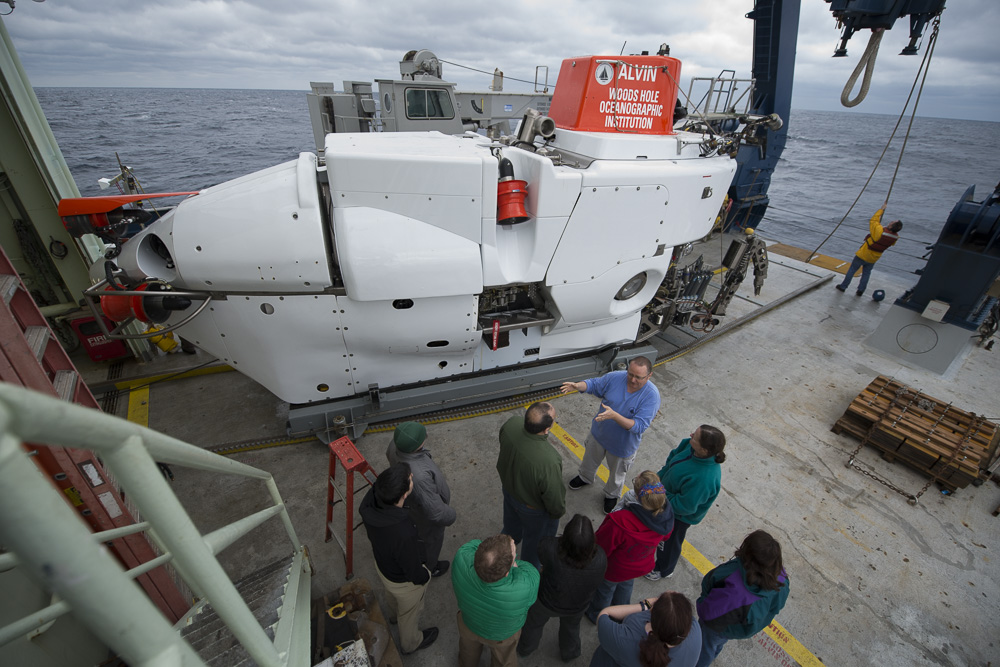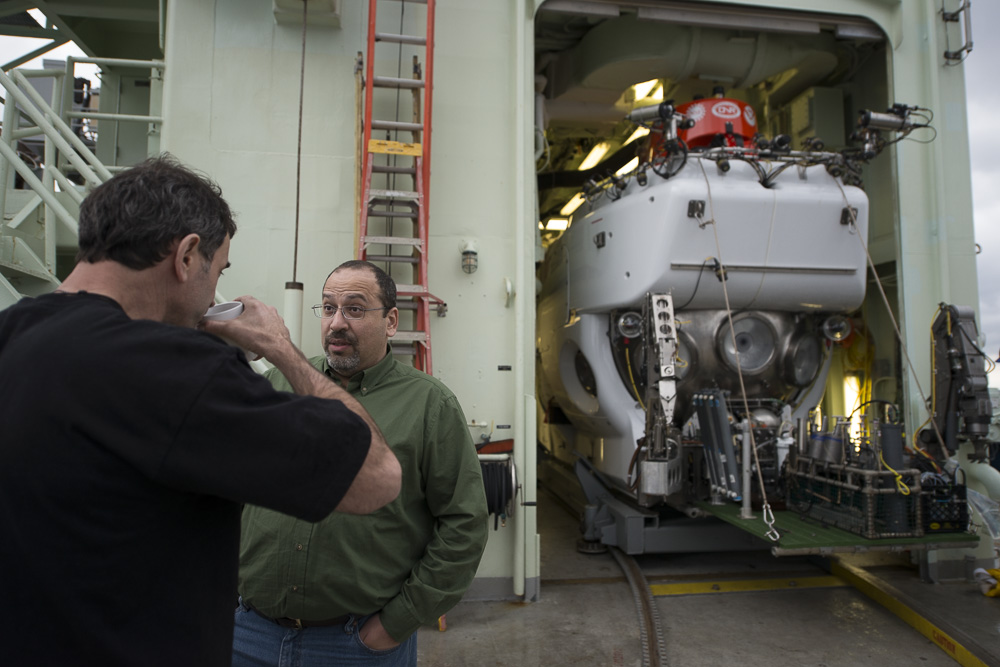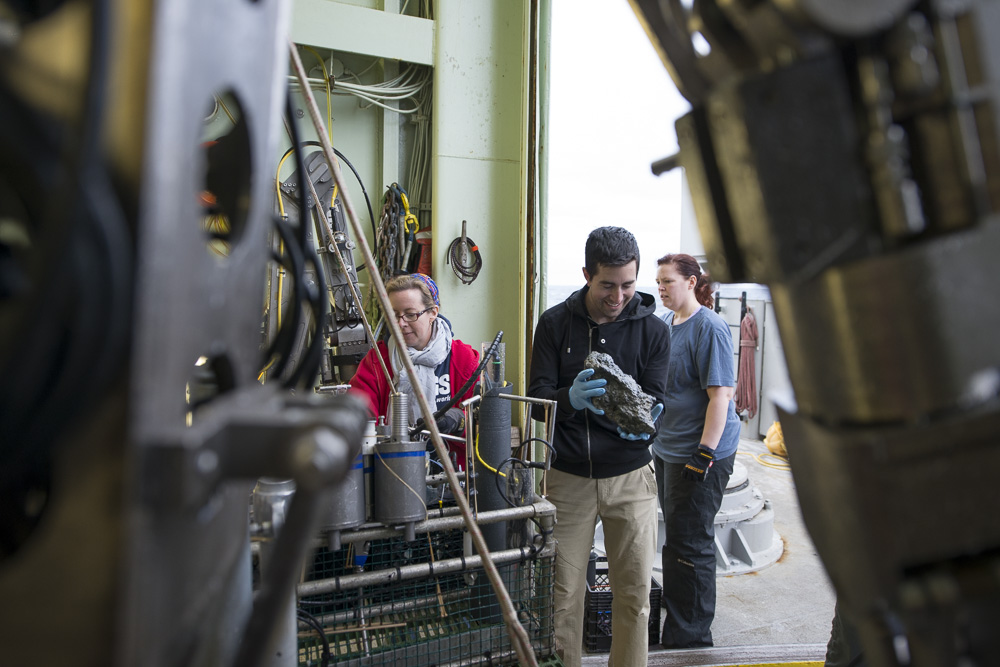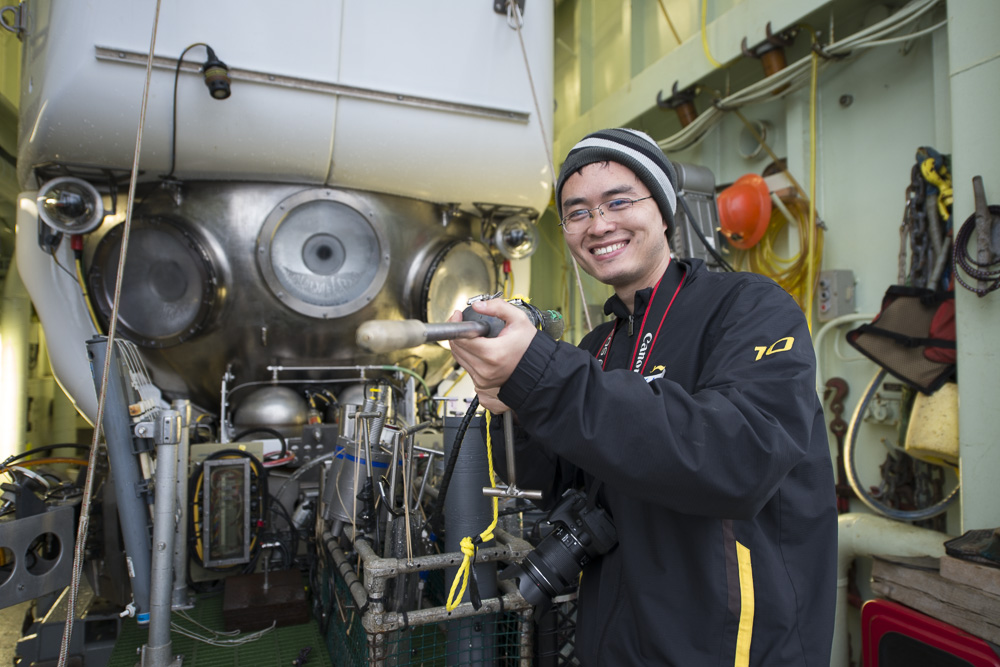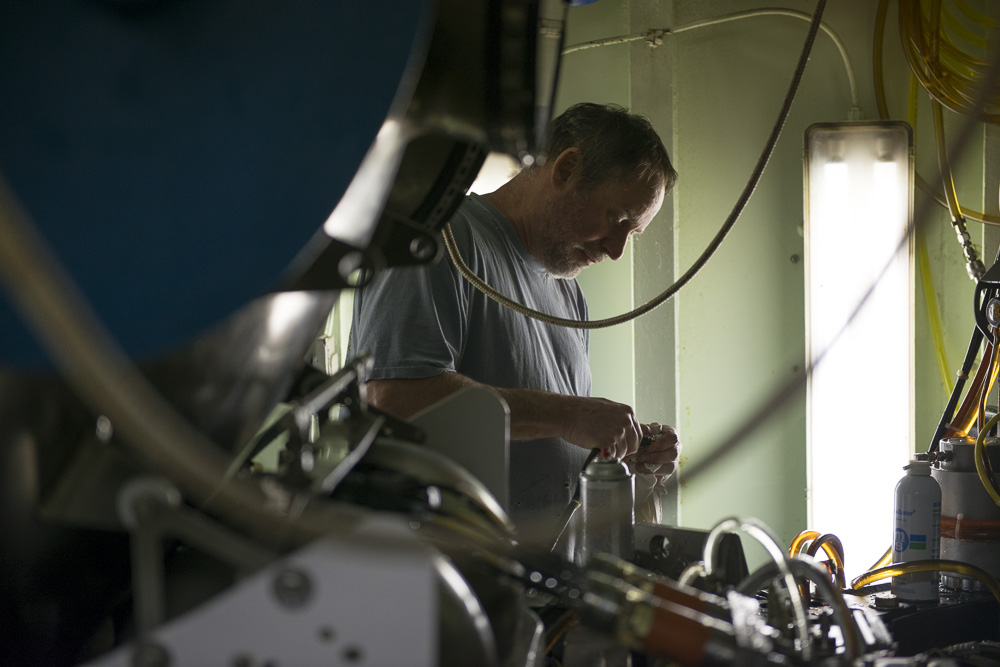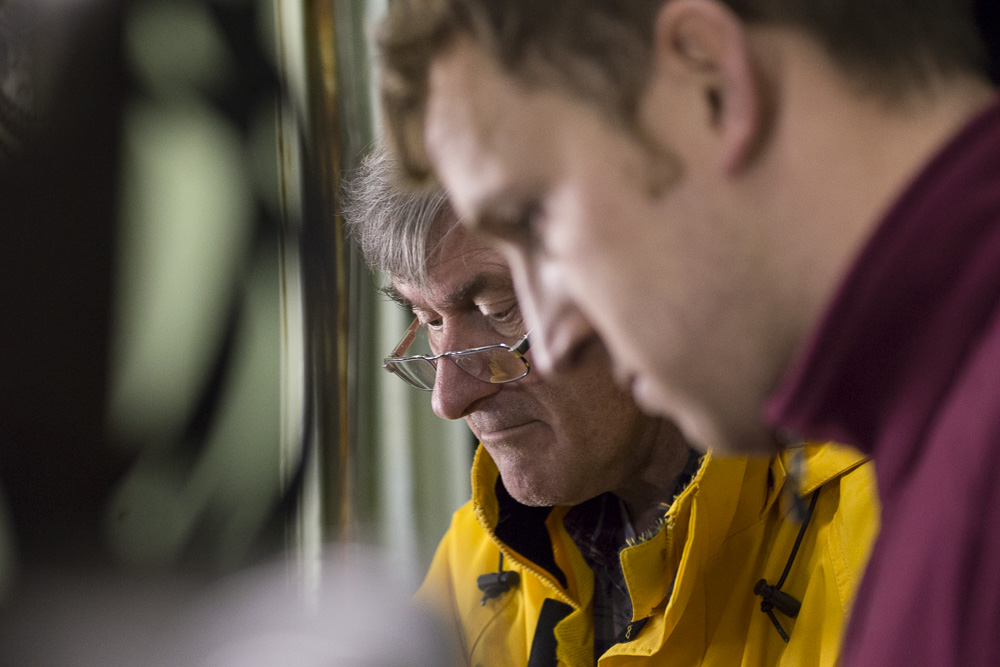The upgraded Alvin added two new forward-looking viewports, and the sub’s two manipulator arms had to be adjusted so that they would not block the new views. The arms were given more flexibility at their shoulder joints so that they could swing farther out. A byproduct of that redesign is that the arms have extended their reach forward from 93 to 118 inches and expanded their coverage area from about 100 to 140 degrees.
Alvin pilots on this Science Verification Cruise are practicing working with Alvin‘s arms under field conditions on tasks they are routinely asked to perform, such as taking push cores to collect seafloor sediments and grabbing biological samples such as deep-sea clams. “After three years out of the water during the upgrade, it’s great to see the pilots get back into the swing of things,” said Chris German, chief scientist for the National Deep Submergence Facility at Woods Hole Oceanographic Institution. (Video courtesy of Peter Girguis, chief scientist, Harvard; Funding agencies: NSF, ONR, NOAA; ©Woods Hole Oceanographic Institution; Edited by Chris Linder, WHOI)
